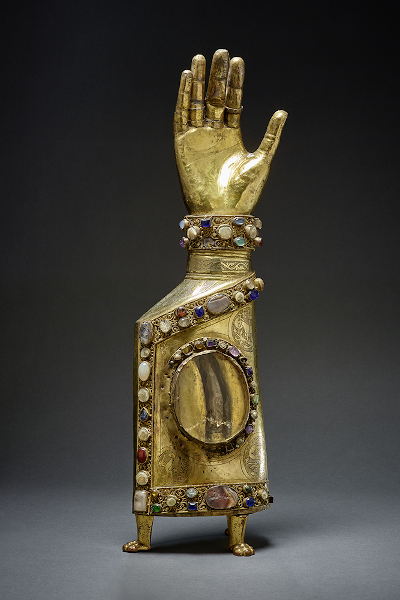Arm reliquary
Halberstadt or Quedlinburg, after 1225, inv. no. DS021
Core made of soapstone or alabaster, silver, repoussé, engraved, gold-plated, copper base, filigree made from gold-plated silver wire, precious stones
The raised hand gracing this richly decorated reliquary reflects its mummified contents, visible behind a rock crystal: the finger of St. Nicholas. The Halberstadt bishop Konrad von Krosigk brought it back with him from the Fourth Crusade in the 13th century, bequeathing it to the cathedral after his death. His instructions to keep the relic “in cristallo” – behind crystal – are what led to this unusual design. Unlike other arm reliquaries made of sheet silver, of which the cathedral treasury has three, the gold-plated metal sleeve was not pulled over a wooden core, but over heavy stone. The arm reliquary is in the shape of an open hand raised in blessing, clad in episcopal garb. Filigree and precious stones adorn the edges of the sleeve and a bangle, directly linking the shape to the position of the venerated saint, as Nicholas was Bishop of Myra.

